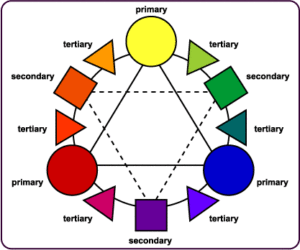25 Ways to Grow Your Social Media Presence
When it comes to social media presence, everyone wants in on the action. Facebook, Twitter, Instagram, Pinterest, and Google Plus are all highly active social media networks. Not to mention the countless other little sites on the web today. Everyone wants to gain social media recognition for their business.
 Having a good, or great, social media presence can help your business grow like wildflowers. But, this will only happen after you develop a large following and learn how to give them what they really want. Here are some great ways any business owner or marketer can increase their social media presence and help their business grow.
Having a good, or great, social media presence can help your business grow like wildflowers. But, this will only happen after you develop a large following and learn how to give them what they really want. Here are some great ways any business owner or marketer can increase their social media presence and help their business grow.
1. Identify Goals and Objectives
The first step in growing your social media presence is to identify your goals and objectives. This means make sure you know what you are going after – before you start posting. Ensure you know how each platform works, what audiences you can reach where, and what your objectives are and you will be off to a great start.
2. Let Them Know you are Human
Let your audiences see a softer side. This means interacting on your social media accounts often. This doesn’t mean just throwing up a link to your article and hoping someone will read it or click on it. This means really getting on there and interacting with everyone. Respond to posts from your audience and interact when they show interest. Show them who you are and your audience will feel more connected to you and they will want to read other articles or visit your website.
3. Understand Their Needs
Understanding what your audience needs will help you be able to interact with them on a more intimate level. Knowing what they want to read about and what they believe in will help you understand what you need to give to them. Once you understand this, you can give the everything they want which means bringing them to your website to see what your business is all about.
4. Include the Icons on Your Website
Make sure to include the icons of your social media networks on your personal website. This will make it easier for those coming to read your stuff to like and follow you. Make is simple for them to connect with you.
5. Link Your Profile to Your Website
Link your Facebook, Twitter, or any of your other social media profiles to your website. Just like you want to provide links on your website to your profiles, you also want to link to your website so people can easily learn more about your company.
6. Share with Everyone
Share your social media accounts with everyone you know. Don’t be spammy, but don’t be afraid to share. By doing this, they will know you have a presence on Facebook, Twitter, etc. and they can share them with everyone they know. This is a simple way to get the word out.
7. Create an Integrated Social Media Strategy
You want to make sure each social media network you are involved in serves a purpose. You can ensure this by starting a marketing calendar. Make sure to add all of your upcoming events, blog posts, and everything else you decide to do with your business into this calendar. This will help you stay organised and understand how each of your social media accounts will bring in more untapped sectors for your business.
8. Produce Valuable Content
You also want to ensure you are producing the most valuable content not only into your blog but also on your social networking accounts. Having the best content helps showcase your business and website, which brings in more customers and more money.
9. Engage with Everyone
You want to engage with those who post on your social media pages. This means when someone posts something, talk back to them. Let them know you are reading what they are posting and you are listening to what they want. Then, give them more of what they want to keep them posting on your pages.
10. Optimise your Social Media Accounts
Optimising your social media accounts means using keywords. Use the keywords that go with your business. Think of what your customers are looking up on Google or other search engines, and use those keywords in your posts.
11. Use Hashtags Often
Hashtags are in these days. Everyone is using them to bring more people to their blogs or websites. Using hashtags on Facebook, Twitter, and Google Plus will help bring more people onto your social media accounts and your website – but use them carefully. Don’t finish every post with 15 unrelated hashtags. #dontbethatguy
12. Add the Social Icons to Your Emails
Think about it: You send out emails all day long. If you have your social media icons in your email, people will likely get curious and start to check out your pages and eventually, your website. This is a great way to grow your social media presence.
13. Provide a Benefit to Your Audience
People who visit your social media page or website are asking ‘What’s in it for me?’ Show them by giving something away for free, something designed to draw them into your business by building trust or peaking interest. Consider giving away a short trial, a free book. a discount code, or even liking their page back. This will help you earn valuable followers who will stay engaged.
14. Branch Out
Don’t just use Facebook, Twitter, Pinterest, Google Plus, and Instagram. There are tons of other social media platforms. This could mean social bookmarking sites, social review sites, and more. You can also try Foursquare and let your customers know where you are by checking into the site. Being social is about more than just the big guys.
15. Use Games
People like to respond to questions, and they like to be right. Using trivia games to bring in more likes, follows, and traffic is a great way to build up engagement and bring in more customers. It can also be a lot of fun!
16. Consistently Post at a Comfortable Rate
It gets frustrating visiting one of your favorite blogs and seeing it hasn’t been updated in a while. This means you should post often at a comfortable rate. If you have to, you can always schedule your posts in advance so you don’t leave your audience hanging.
17. Try Not to Outsource
Try to post on your blog, website, and social media accounts yourself. This will give you an authentic look. If you do decide to outsource, make sure it is to someone who has a similar voice to yours.
18. Do your Research
Each type of business is going have different experiences on social media for example, a restaurant is going to have a much different plan than a used car lot. Take the time to research other ways to get more likes and follows to your social media accounts. Dig in there and learn everything you can about growing your social media presence for your specific market.
19. Give them a Reason
Give your customers a reason to like your page and follow you on Twitter. Show them you will be posting often and make sure to post interesting updates often. This will give them a reason to engage with you.
20. Tackle Customer Complaints Efficiently
 If you do end up with a complaint from someone on your website, tackle it fast and efficiently. Respond and be professional even if they aren’t. Make sure to take good care of them by answering their questions quickly. Offering solid customer service.
If you do end up with a complaint from someone on your website, tackle it fast and efficiently. Respond and be professional even if they aren’t. Make sure to take good care of them by answering their questions quickly. Offering solid customer service.
21. Provide Q & A’s
Provide questions and answers on your social media accounts and your website. Use a frequently asked questions section to help answer their questions efficiently.
22. Ask Clients to Share and Connect
Sometimes just by asking your clients and maybe even potential clients to share and connect with your social media networks, you just might be able to bring in more fans.
23. Create a Plan and Stick to it
Create your plan to bring in more fans. Stick to it and do what you think is working more often. If you find something that works really well, stick to it.
24. Treat Each Social Network as an Individual One
Treat each social network account individually. Share them individually and share them often to bring in more fans.
25. Go Further in Customer Service
Make sure if someone has a problem, go above and beyond to help them reach a conclusion. If you do this, it will show you are doing your best to provide them with as much help as possible and they will realise you are a good person with a good business. This will make them want to come back.






